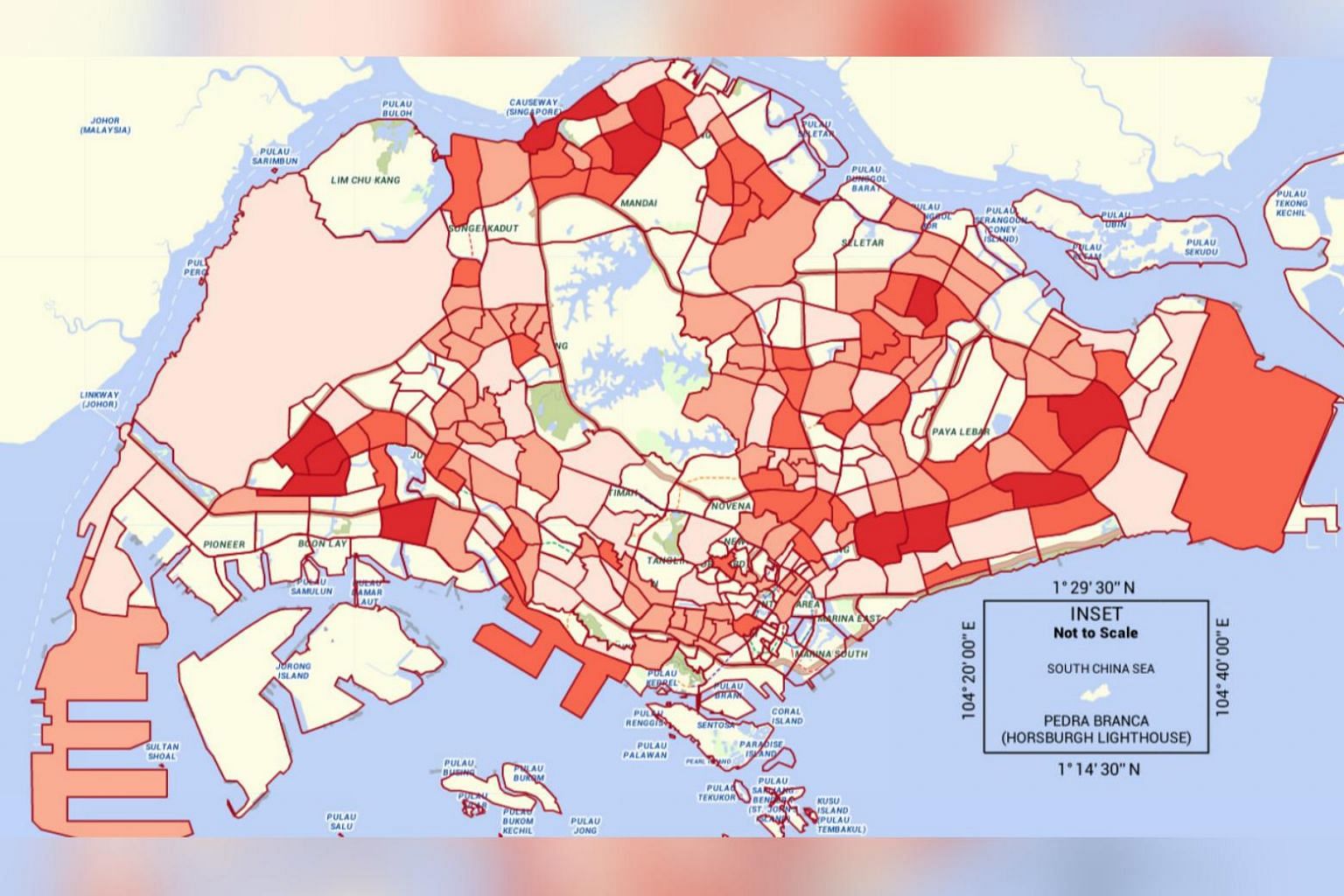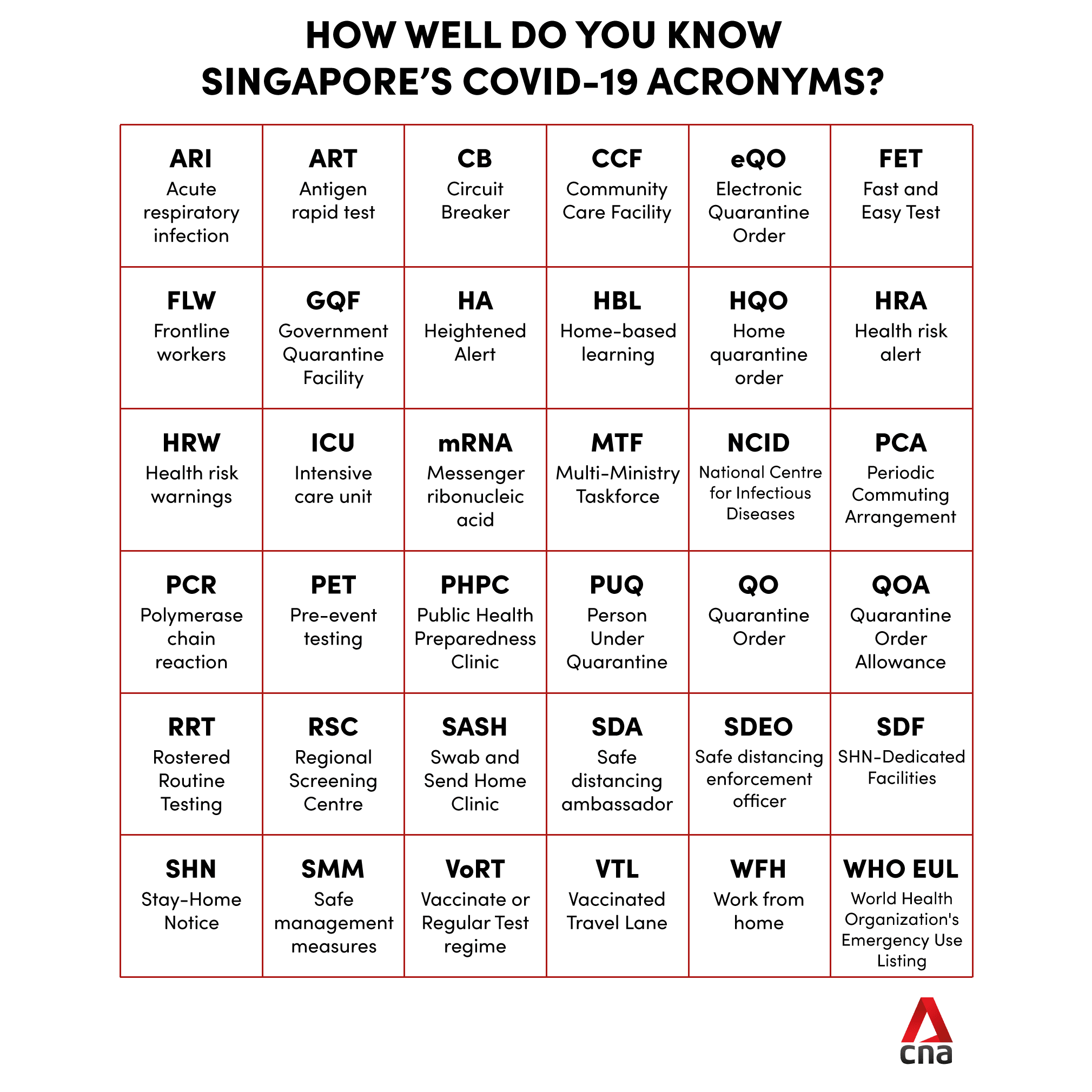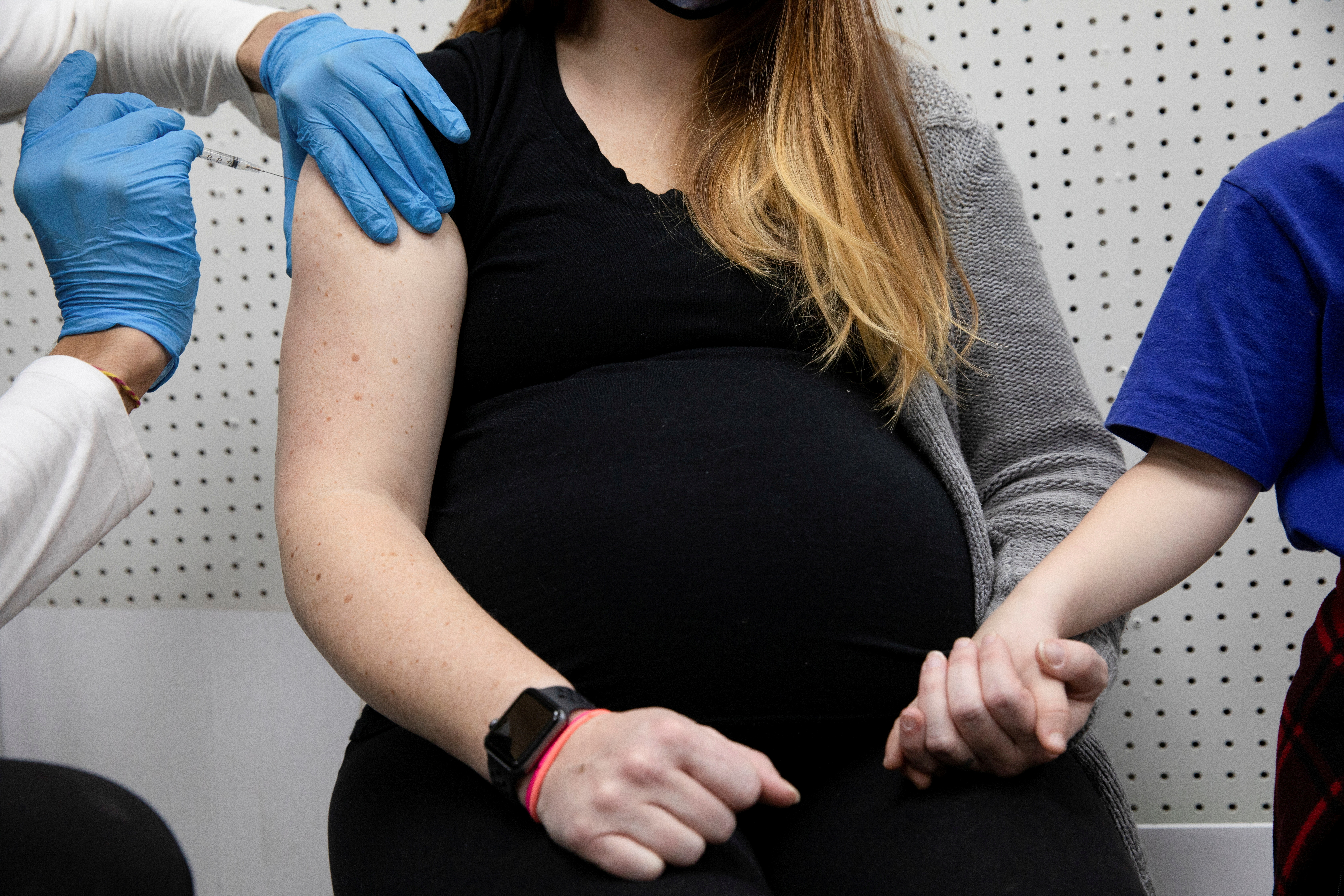1ST OCT 2021
Summary of local situation
· 1,356 cases are currently warded in hospital. 222 cases require oxygen supplementation and 34 are in the intensive care unit (ICU).
· Over the last 28 days, of the 31,057 infected individuals, 98.2% had no or mild symptoms, 1.5% required oxygen supplementation, 0.2% required ICU care, and 0.1% has died.
· As of 30 September 2021, 82% of our population has completed their full regimen/ received two doses of COVID-19 vaccines, and 85% has received at least one dose.
· As of 1 October 2021, 12pm, the Ministry of Health has detected a total of 2,909 new cases of COVID-19 infection in Singapore, with 2,079 in the community, 818 in the migrant worker dormitories and 12 imported cases. |
Condition of hospitalised cases
As of 1 October 2021, 12pm, 1,356 COVID-19 cases are currently warded in hospital. Most are well and under observation. There are currently 222 cases requiring oxygen supplementation, and 34 in the ICU. Of those who have fallen very ill, 214 are seniors above 60 years.
2. 8 more cases have passed away from complications due to COVID-19 infection.1 Of these, 7 were male Singaporeans and 1 was a female Singaporean, aged between 66 and 96 years. Amongst them, 4 had been unvaccinated against COVID-19, 2 had been partially vaccinated and 2 had been vaccinated. All of them had various underlying medical conditions. In total, 103 have passed away from complications due to COVID-19 infection.
Figure 1: Number of Active Cases in ICU or Requiring Oxygen Supplementation2
/fig1_1oct21.png?sfvrsn=959465d9_0)
3. Over the last 28 days, the percentage of local cases who were asymptomatic or had mild symptoms is 98.2%. 471 cases required oxygen supplementation and 52 had been in the ICU. Of these, 51.1% were fully vaccinated and 48.9% were unvaccinated/ partially vaccinated. 45 have died, of whom 26.7% were fully vaccinated and 73.3% were unvaccinated/ partially vaccinated.
Figure 2: Local Cases in the Last 28 Days by Severity of Condition3
/fig2_1oct21.png?sfvrsn=4d473b40_0) Figure 3:
Figure 3: Deaths and Active Cases in ICU, Requiring Oxygen Supplementation or Hospitalised1, by Age Groups
/fig3_1oct21.png?sfvrsn=3105f776_0) Update on vaccination progress
Update on vaccination progress
4. As of 30 September 2021, 82% of our population has completed their full regimen/ received two doses of COVID-19 vaccines, and 85% has received at least one dose.
5. We have administered a total of 9,204,856 doses of COVID-19 vaccines under the national vaccination programme (Pfizer-BioNTech Comirnaty and Moderna). In total, 4,594,491 individuals have received at least one dose of vaccine under the national vaccination programme, and 4,487,124 individuals having completed the full vaccination regimen. To date, we have invited about 500,000 eligible seniors to receive their booster doses. 236,849 individuals have received their booster shots and another 111,000 have booked their appointments. In addition, 198,533 doses of other vaccines recognised in the World Health Organization’s Emergency Use Listing (WHO EUL) have been administered, covering 101,290 individuals.
Locally transmitted COVID-19 cases
6. As of 1 October 2021, 12pm, the Ministry of Health has detected a total of 2,909 new cases of COVID-19 infection in Singapore, comprising 2,079 community cases, 818 dormitory residents cases and 12 imported cases.
a) Active clusters under close monitoring
7. We are closely monitoring the clusters listed below, which have already been ringfenced through tracing, testing and isolation.
Figure 4: Large Clusters with New Cases
Cluster | New Cases | Total4 | Remarks |
| ASPRI-Westlite Papan Dormitory | 18 | 115 | Intra-dormitory transmission amongst residents with no evidence of spread beyond dormitory. |
| 9 Defu South Street 1 dormitory | 61 | 212 | Intra-dormitory transmission amongst residents with no evidence of spread beyond dormitory. |
| PPT Lodge 1B Dormitory | 11 | 84 | Intra-dormitory transmission amongst residents with no evidence of spread beyond dormitory. |
| Pasir Panjang Wholesale Centre | 1 | 165 | Transmission amongst workers and trade visitors. Of the 165 cases, 150 are workers at the market, 4 are trade visitors and 11 are household members of cases. New case has already been quarantined. |
| Avery Lodge | 28 | 397 | Intra-dormitory transmission amongst residents with no evidence of spread beyond dormitory. New cases have already been quarantined. |
| Blue Stars Dormitory | 21 | 442 | Intra-dormitory transmission amongst residents with no evidence of spread beyond dormitory. New cases have already been quarantined. New cases have already been quarantined. |
| Woodlands Dormitory | 6 | 354 | Intra-dormitory transmission amongst residents with no evidence of spread beyond dormitory. New cases have already been quarantined. |
| North Coast Lodge | 14 | 379 | Intra-dormitory transmission amongst residents with no evidence of spread beyond dormitory. New cases have already been quarantined. |
| Tuas South Dormitory | 5 | 28 | Intra-dormitory transmission amongst residents with no evidence of spread beyond dormitory. New cases have been quarantined. |
| Woodlands Care Home | 3 | 31 | Transmission amongst residents and staff. Of the 31 cases, 30 are residents, 1 is a staff. New cases have already been quarantined. |
b) Summary of trends for local cases
8. There are 2,897 new cases of locally transmitted COVID-19 infection in Singapore, with 2,079 in the community and 818 in the migrant worker dormitories. Amongst the local cases today are 556 seniors who are above 60 years.
Figure 5: Number of Community Cases by Age
/fig5_1oct21.png?sfvrsn=92164bd1_0)
Figure 6: Number of Dormitory Cases by Age
/fig6_1oct21.png?sfvrsn=99eeda36_0) Summary of trends for imported cases
Summary of trends for imported cases
9. There are a total of 12 imported cases, who have already been placed on Stay-Home Notice (SHN) or isolated upon arrival in Singapore. Of these, 7 were detected upon arrival in Singapore, while 5 developed the illness during SHN or isolation.
Figure 7: Number of Imported Cases by Detected Upon Arrival/ Detected during SHN or Isolation
/fig7_1oct21.png?sfvrsn=b5b31d3_0)
10. From today, we have published on the MOH website (
https://covidsitrep.moh.gov.sg/) a map of areas frequented recently by a larger number of confirmed COVID-19 cases to help guide individuals on their movement and activities. Individuals who have been to these hotspots during the same timeframe are encouraged to monitor their health, perform regular ART self-tests throughout the 10 days following their potential exposure, and minimise any unnecessary interaction with others.
11. Please refer to MOH’s daily Situation Report (
www.moh.gov.sg/covid-19/situation-report) for details.
MINISTRY OF HEALTH
1 OCTOBER 2021
1 Cases 73375, 76228, 78363, 81708, 85439, 91179, 93933, and 97170.
2 Includes all cases who are currently hospitalised.
3 Includes only new cases reported in the past 28 days.
4 Includes new cases added today.




/fig1_1oct21.png?sfvrsn=959465d9_0)
/fig2_1oct21.png?sfvrsn=4d473b40_0)
/fig3_1oct21.png?sfvrsn=3105f776_0)
/fig5_1oct21.png?sfvrsn=92164bd1_0)
/fig6_1oct21.png?sfvrsn=99eeda36_0)
/fig7_1oct21.png?sfvrsn=b5b31d3_0)


